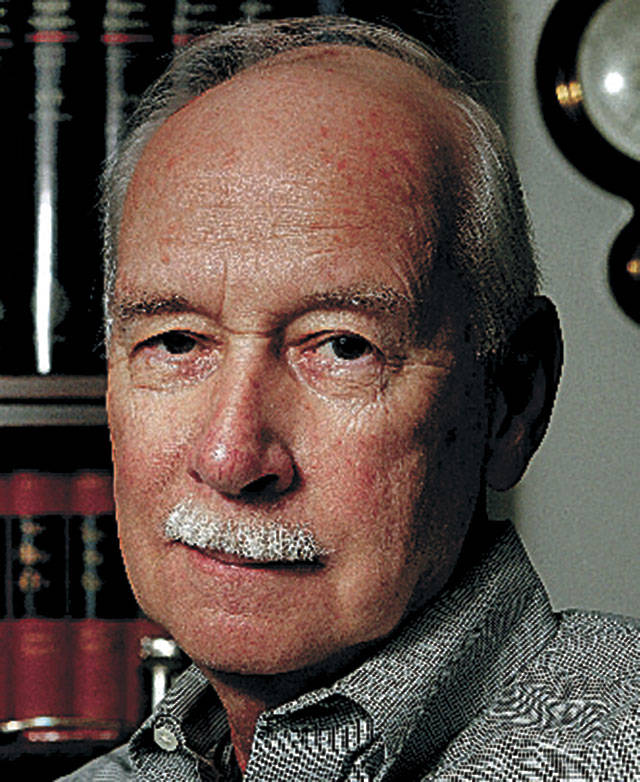James O. Hornfischer’s bestseller, “The Last Stand of The Tin Can Sailors,” describes the ships and the men who sailed them into battle…and almost certain death.
The setting is World War II. The U.S. is attempting to retake the Philippines with an amphibious landing at Leyte Gulf.
Amphibious landings are especially vulnerable when troops and supplies are being landed, and Japanese Navy saw this as an opportunity to stop the American advance across the Pacific and give the Imperial forces time to rebuild their strength.
A destroyer can feel awfully small in a fight involving huge battleships, cruisers, and aircraft carriers – like a squirrel finding itself on the 40-yard line of an NFL playoff game.
One hit from the main battery of a battleship or a cruiser could easily send a destroyer to the bottom.
Destroyers in that time earned their nickname, “tin cans” both from their unarmored vulnerability to enemy fire and the decidedly uncomfortable way they made their way in stormy seas.
The term also applied to the destroyer escorts, which were designed as smaller, less expensive, anti-submarine escort ships for convoys, and were even more uncomfortable for their crews.
We can imagine what it must have felt like to be on one of those “tin cans,” finding yourselves the only thing standing between the beachhead and a powerful enemy force bent on annihilating the defenseless transports off-loading the troops and cargo of the amphibious landing.
Hornfischer provides readers with a moving account of the resulting naval engagement as the destroyer-Davids attack a fleet of Goliaths. What he also provides, though, is a look at the leadership and management characteristics that held the small ships’ crews together as they faced almost certain doom.
Translating wartime shipboard experiences into workplace lessons is an uncertain process at best.
There is nothing in a business environment that is truly comparable to confronting people who are trying to kill you.
Still, workplaces have their pressures and times of stress, and preparing for these can be surprisingly similar to preparing a ship’s crew for combat – and we can learn some useful lessons from the leadership in the heroic actions of the Navy’s “tin cans” at Leyte Gulf so many years ago.
It was the commanding officers (COs) that gave each ship its character – in very much the same way that the Chief Executive Officer (CEO) imprints a business organization.
The COs of the Navy ships were a diverse group of personalities, no two alike, proving once again that there is no single “type” of successful leader. There is room for all kinds.
Most of the leadership characteristics revealed by Mr. Hornfischer’s account are familiar to anyone who has ever looked at a management textbook.
There is one in particular, though, that is rarely, if ever, mentioned in texts or articles about how to lead, manage, and motivate people and mold them into a team.
The reason for its lack of popularity with textbook writers and motivational speakers may be that it is the one leadership quality that has to be totally genuine. It cannot be faked. It can be learned, but not easily, and is generally out of reach for the self-absorbed.
The leadership characteristic he reveals is faith-based, although not in the religious sense, and it also uses disappointment, and its avoidance, as a strong motivator.
The USS Johnston, was one of the “tin cans” which displayed such dedication to its responsibility to protect the troops and such audacity (let alone sheer bravery) in attacking the enemy’s superior force that it stunned and unbalanced the Japanese command.
It was a major factor in the Japanese decision to turn back and return to home waters. What prepared the crew for this action? At the heart of their heroic performance was the commanding officer’s faith in them.
The training and preparation that allowed the crew to function effectively despite their justifiable fear was the direct result of the relationship between them and their skipper — a relationship based on mutual trust and faith.
Commander Ernest E. Evans was the CO of the Johnston, and Mr. Hornfischer writes that “Evans trusted people to do their work. If they failed, he let them — he knew instinctively, as they did, that they wouldn’t fail him twice. He never had to spell out the consequences; the very thought that the skipper might become disappointed was enough.”
The power of those two intangibles, faith and disappointment, is easily forgotten in today’s world of worker metrics, surveillance, and loud, often harsh, criticism.
From CEOs to football coaches, classroom teachers to shift managers, leaders would do well to remember the quiet, unseen power of believing in people, in having faith in them. It isn’t easy, but it works.
James McCusker is a Bothell economist, educator and consultant. He also writes a column for the monthly Herald Business Journal.
Talk to us
> Give us your news tips.
> Send us a letter to the editor.
> More Herald contact information.

























